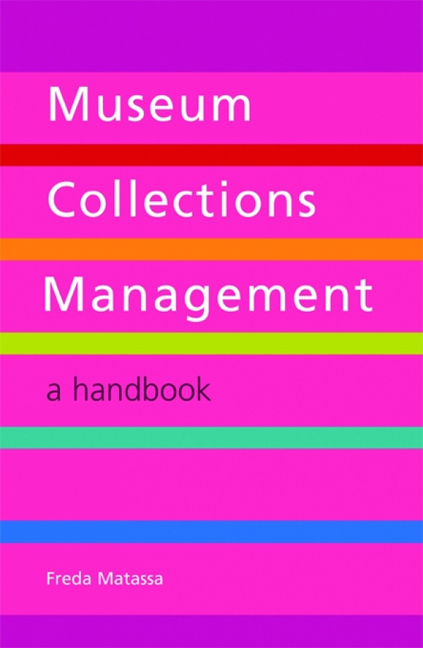5 - Documentation
from Part 2 - Collections management: processes
Published online by Cambridge University Press: 08 June 2018
Summary
Fundamentals
Information is held in many different formats. Most museums have a collections database but smaller or volunteer‑led museums may use simple spreadsheets or still rely on paper records. Any form of paper records such as entry ledgers, acquisiton registers or card indexes should be retained and may have to be consulted from time to time even if most of the information has been transferred to a database. Certain functions of collections management will always require paper records, for example, contracts, receipts or title deeds, all of which require signatures and may be legally binding. In any case, all paper records can act as a back‑up to the electronic system. The guidelines for data entry, maintainance and preservation are the same whatever the format of the information.
The responsibility of any collecting organization is not just to collect objects but to ensure that information about them is gathered, preserved and increased. Information about an object can range from as little as its title or description to a complete history, including where and when it was found, its usage and any previous owners. No matter how much or how little information is available, it is vital to record and preserve the details, usually these days in the form of an entry in a specialist database management system, or DBMS. An item separated from its information loses much of its identity and its value is greatly reduced in both cultural and financial terms. At the most basic level, any museum must maintain the following information on the objects it holds:
• what the object is – name or description
• where it came from – provenance or history
• how it should be cared for – materials, handling, storage, display
• current location – where it is at any given time.
The museum must be able to account for all the objects in its care and must keep records of any item entering the premises, the exit of any item and the locations of all objects that it holds. Information contributes to knowledge and enjoyment of the objects. It can help make connections between objects, classifications and entire collections, can aid research and enriches the visitor experience.
- Type
- Chapter
- Information
- Museum Collections Management , pp. 67 - 94Publisher: FacetPrint publication year: 2011



